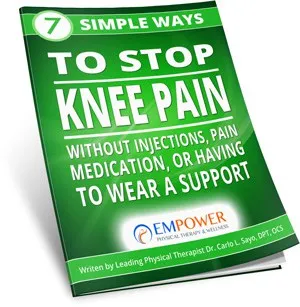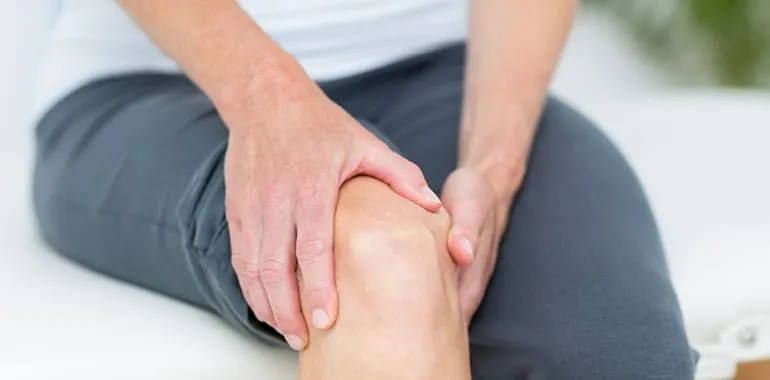Chino Hills – Last week, introduced you to the anatomy of the knee, as well as the different structures that can cause pain. I hope I didn’t confuse or overwhelm you with all that information, and I promise to get much more focused today. Here’s a quick recap of last week, in case you missed it: the knee is made up of 3 joints. There are several muscles that are involved with the knee, the most common of which is the quadriceps group (quads). Your knee has 4 primary ligaments, there are some other structures involved as well, including you 2 menisci and your IT Band.
Today, I want to dive into the most common cause of knee pain that we help people in the clinic, and I will also give you some helpful tips at the end. First, what is the Patello-femoral (PF) joint? If you remember from last time, the PF joint refers to the kneecap (the patella) gliding up and down a shallow groove in your thigh bone (the femur). This joint is pretty easy to locate: just sit with your knee out straight, with your muscles relaxed. You should be able to grip the sides of your kneecap and wiggle it from side to side. Now, if you try to tighten your quad muscles on the front of your thigh (think of pushing your knee fully straight), you should be able to feel this snug up your kneecap so that you can no longer push it side to side.
This should give you an idea how shallow the joint is, which leads us to the problem with the PF joint, and why this pain is so common:
Since the joint is so shallow, it relies mostly on your muscles to stay in its proper place.
As you bend and straighten your knee, your kneecap should stay in good alignment with the groove. When the alignment changes, especially over a long period of time, you start to develop pain and irritation underneath the kneecap. This pain gets worse when you do things like squatting down, going up and down stairs (especially down), trying to stand up from a low chair and even sitting too long! (this part happens because when you sit, your kneecap gets “pushed back” towards your leg causing pain). Now that you know what PF pain looks like, let’s talk about what causes it.
As I mentioned earlier, keeping this joint happy depends a lot on good muscle control of that kneecap as it moves up and down in its groove. If you recall that the quadriceps muscle group engulfs the kneecap, it makes sense that good quad strength is important to having a healthy joint. The other key to keeping the kneecap happy is to keep the hips strong. Here’s why: Imagine standing up straight and bending to squat down. If you became “knock kneed” that would typically create pressure on the knee and the kneecap. What controls this movement are your hips!.
Since the knee is right in the middle of your leg, you have to keep in mind that the alignment of the knee is directly affected by the joints above and below. If you ignore the health of the hip and the ankle, strengthening your knee might not be enough. This means if parts of your hip and ankles are tight or weak, and also in pain, treating just your knee is no longer the best solution.
But don’t let that get you down! I’m going to share helpful information with you about “kneecap” joint pain and knee pain in general that will allow you to start reducing your pain right away.
For Today, Let Me Give You a Few Helpful Tips:
Next time, I’m going to continue sharing information to allow you to start getting on top of your knee pain and getting back to your active lifestyle. In the meantime, if you are wondering if you have Patello-Femoral “kneecap” pain, feel free to reach out to me and I’ll do my best to answer that question.
The author, Dr. Carlo Sayo, is a Doctor of Physical Therapy and co-owner of Empower Physical Therapy and Wellness in Chino Hills. He’s happy to answer any questions about knee pain by phone at (909) 907-0805 or by email at Carlo@empowerPTwellness.com



